Types of hand woven craftsmanship among the shahsavan tribes
varni is a kind of one-faced kilim, from traditional and special hand-Persian carpet of Shahsavan nomadic girs and women of Arasbaran and Moghan. Varni loom is traditionally made fromwood. (Types of hand woven craftsmanship among the shahsavan tribes)
Rooted in the beliefs and customs of Shahsavan nomads. the designs of these hand-weavings are mentally woven In varni’s design, diferent human, animal and plant motifs are
used alongside symbolic designs with different meanings such as amulet and prayer.
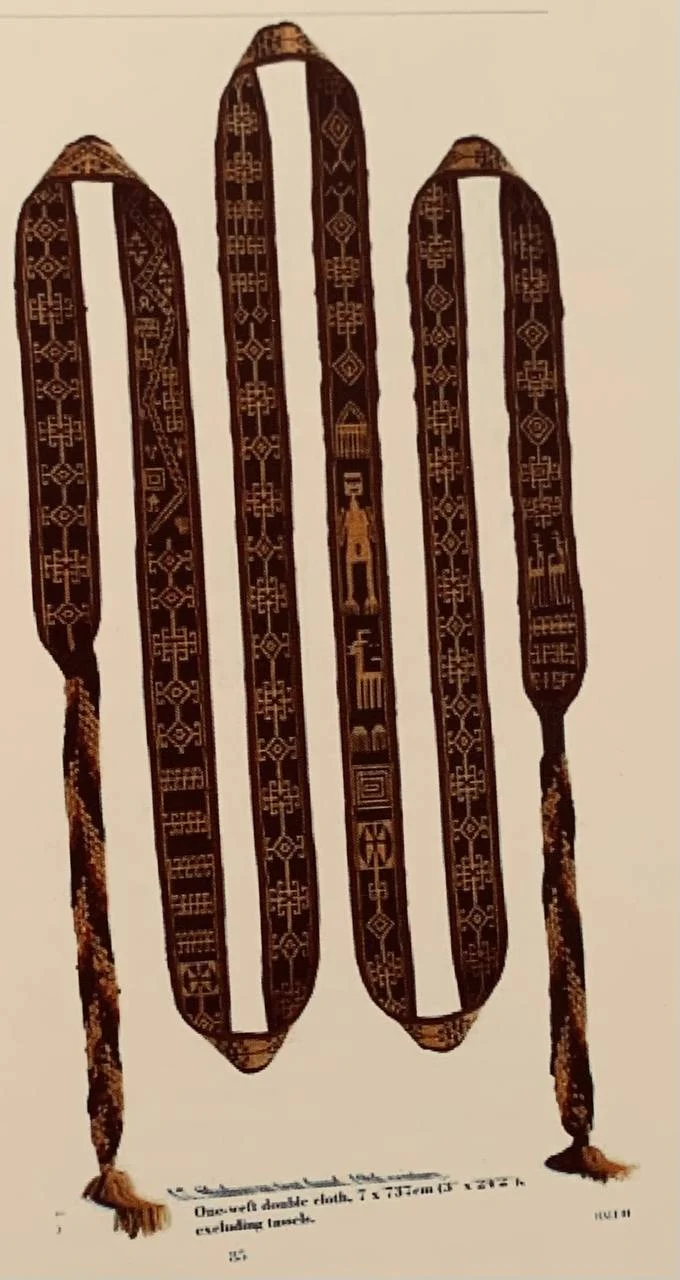
Shahsavan women usually weave their Varnis in certain sizes. Vami is mainly woven in the district of Qaradagh including the cities of Ahar and Kaleybar by nomads and some villagers in the region of Moghan embracing the cities Bilesavar Moghan,Parsabad Moghan, Khyav(Meshkin Shahr). Types of hand woven craftsmanship among the shahsavan tribes
*Click on the opposite link to see precious Iranian handmade and machine combined silk carpets*
Historically, the main source of production is the Qarabagh region of Azerbaijani Republic of the Soviet Union. Tribal relations and cultural ties have triggered the engagement of these groups on both sides of the northerm and southern coast of Aras, through which The tradition of Varni weaving has been common in Arasbaran region, and thereafter, among the tribes and tribes of the Moghan plain.
The product range includes a variety of forms from the carpet and the cover to the means of keeping or carrying the furniture and home furmishings that have been sed in the life of the Shahsavan Moghan tribes and some peripheral areas, and this weaving technique has been developed among the nomadic and setled nomads in these areas. persian Handmade carpet
Vami is generally produced in grasslands (ropical areas where nomads stay as autumn and winter habitats) and are designed by the nature and surroundings and mentally produced by nomadic women and girls. Varni is exclusively produced by the household and its tools
(loom, beating comb,.huff and Kajou(warp separator sticks)) are all made locally.
Shahsavan women and girls produce Verni in the so-called asylum, the same space as the nomadic household. Varni weaving is done no time-bound at the leisure time of everyday life. It is very difficult to create circular motifs in varni tufting, hence the varnis are generally geometric, and circular designs are woven very rarely. Types of hand woven craftsmanship among the shahsavan tribes

The shape of the square loom used is not only devoted to varnish and is used for carpet weaving,
and has the same components as upper beam, lower beam, Left pillar, Right pillar, column, heddle, warp separator stick and batten for wooden looms. Silk carpet
The length of varni loom for left and right pillars is as much as half the length of the varni, plus 30 cm and its width (the length of upper beam and lower beam) is as wide as the width of the varni, plus 20 cm. Nomadic nomads often use horizontal looms due to the low height of their tents, and nomadic people in the countryside often havea vertical loom to weave varnis.
Opposite to the loom is Takhteband the place where the weaver is seated. The tools used in varni weaving are also carpet weaving tools including shedstick, knife, scissors, and beating comb. For varni, yarns are not spinned into skeins, but weavers cut them in the size 40 centimeters and hang in the fom of packages called Asma (Hangers) from the top. Types of hand woven craftsmanship among the shahsavan tribes
Khalcha (carpet)
Carpet weaving is one of the most popular art forms of nomads. Rugs in small pieces are woven
in diverse and imaginary forms and designs. Javal Javal is a large bag of kilim used to carry materials such as flour, forage, meal, kava, and so on. Usually lacks design. Javal is first woven like Kilim and then sewn like a bag of three sides. The head is knitted to be tight. Innovative return to old carpets in Iran
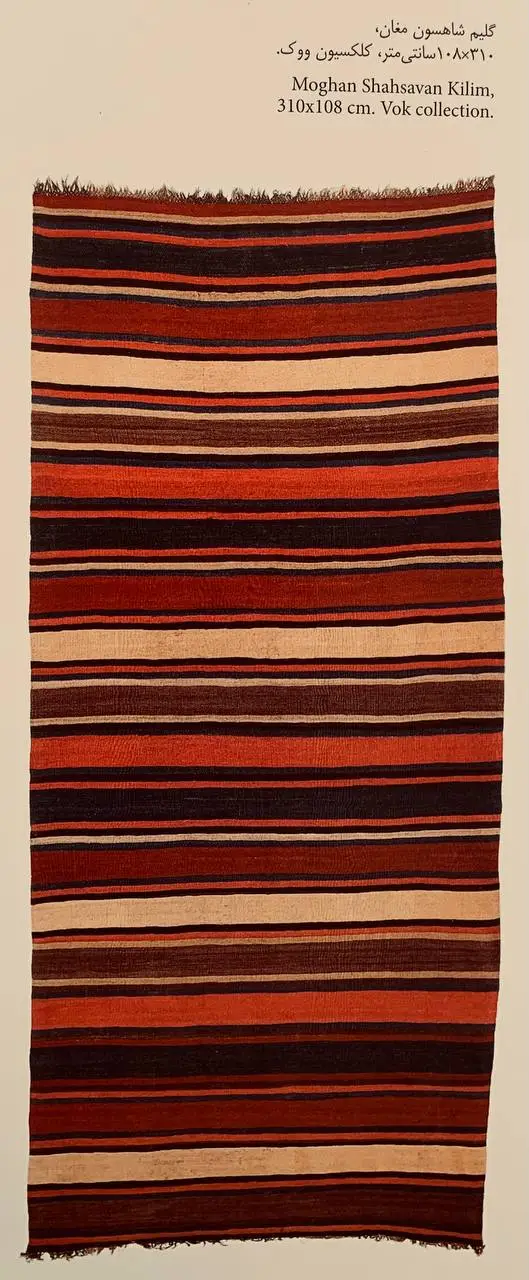
Ojagh Qiraghi(side oven)
Similar to kilim and Jajim is woven and sewn in the form of rectangular cube, used beside the stove and used in the transportation of nomadic appliances as a safe (used in cities on sofa and furniture). Historical changes styles of Persian carpet .(Types of hand woven craftsmanship among the shahsavan tribes)
Duz Turbasi(Namakdan)
is a bag with a tight opening used to store salt. Types of hand woven craftsmanship among the shahsavan tribes. (Types of hand woven craftsmanship among the shahsavan tribes)
Mafrash
This wrapped cube is rectangular; its surfaces are woven before, and then sewn together. Mafrash is used to keep bedding accessories and essential appliances. At the time of
moving, the device is very suitable for placing and transporting various equipment.(Types of hand woven craftsmanship among the shahsavan tribes)
Masnad
Is a small sized kilim in 80 x 150 cm, which is very sturdy and fine and has a more decorative aspect.It is used to create premium cushions. Persian carpet designs(Types of hand woven craftsmanship among the shahsavan tribes)
Khorjin(small Javal, saddle bag)
The saddle bag is made to carry the necessary items and supplies. Interesting motifs are used in thís weaving and it is used during the migration process. If two sides of the saddle bag are separated, there are actually two Jvals(bags). Types of hand woven craftsmanship among the shahsavan tribes.
Hiba (Sack and Backpack)
This industry is similar to the saddlebag but it’s smaller. It takes small necessities and is taken
on shoulder in a trip. The exterior cover is handmade and has interesting designs and colors.(Types of hand woven craftsmanship among the shahsavan tribes)
Kache (Felt)
The best and most common substrate in pergola and its outer cover. Made from the best sheep wool, it has many advantages over Kilim and zilou. Easily produced from the wool of cattle and in the shortest time. It is useful inwet and humid areas and is used as horse rug and camel dowry. Very light and portable, It is embroidered that is the result of art and taste of women.
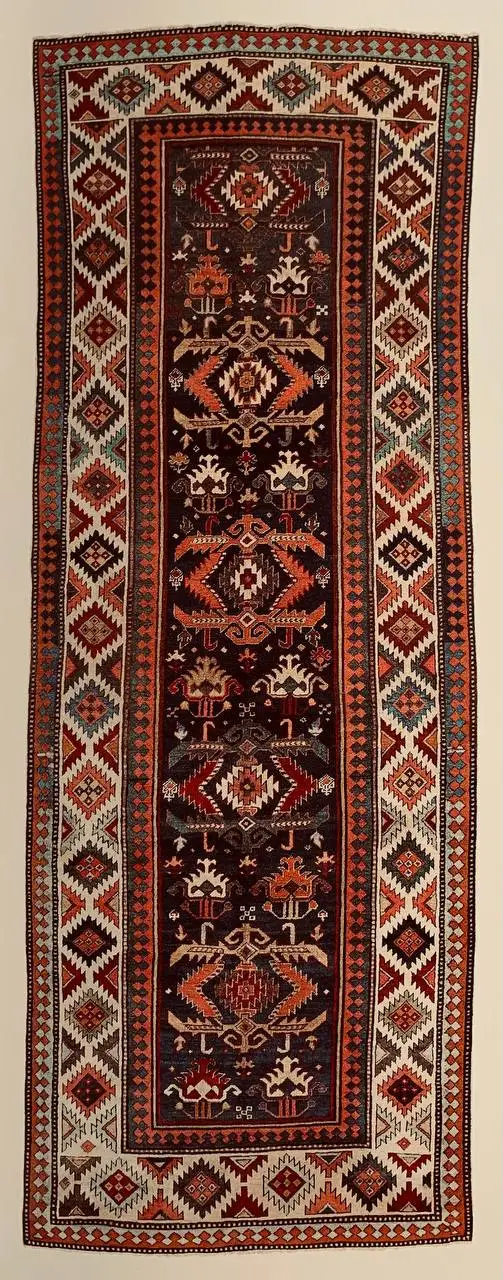
Different Weaving Techniques among Shahsavan Tribes ( Types of hand woven craftsmanship among the shahsavan tribes)

Kilim Weaving
Kilim weaving is the most basic technique and probably the oldest one. After stretching warps, wefts are vertically inserted, cach of which appropriately passes above or below each thread. the order which is reversed by each weft pass. Persian Rural carpet
Different Kinds of Kilim
Cross or diagonal weave with visible warps, front warp and weft, with elaborated, fractured, diagonal veil, fixing elaborated veil, serrated saw-like with transient weft, fixing swallow tail, fixing curved wefts or warp replacement(Jajim weaving).
Sumac Weaving
Steady and fast flat weaves are prepared by this delicate technique. Instead of simply passing over and under warp fibers, wefts wrap around warps with various ratios and most often four warps pass over and two warps under. Town carpets 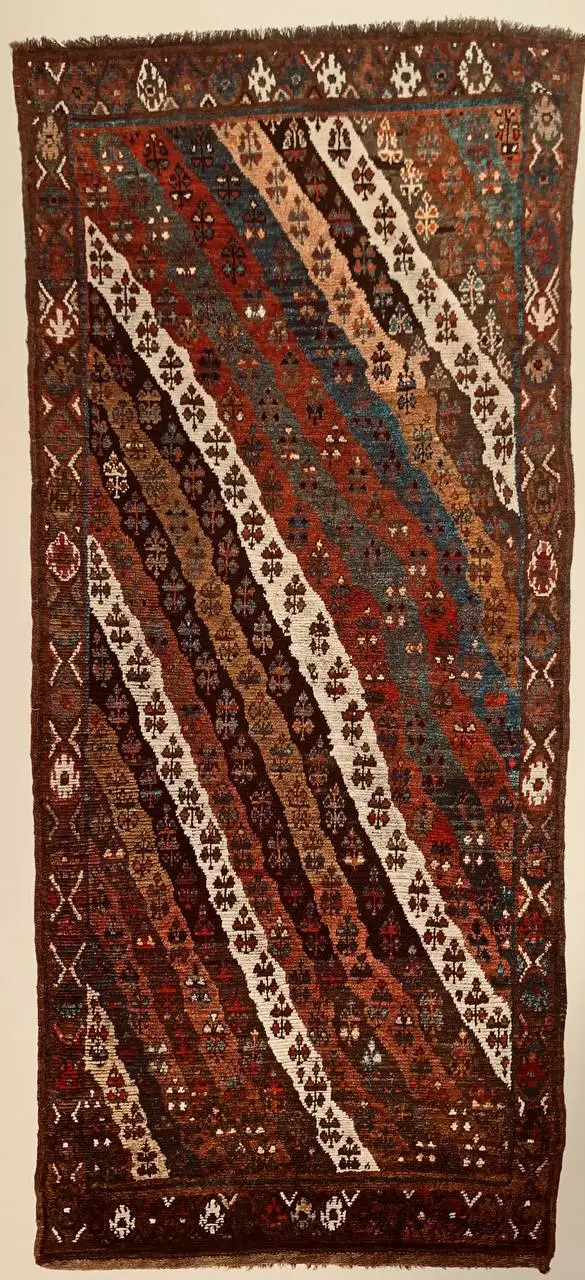
Zili Weaving
A kind of extra wefts weave which is made by the insertion of discontinuous extra wefts. It is applied for designing bags and weaves with different techniques. In traditional type of this method, decorative wefts are exchanged with main wefts. In many Turk-Verneh and Caucasus Sileh Jajims, weft- wrapping technique for background, extra wefts for delicate designs and Zili around the design are used. Style and maktab of Persian carpet
Verni Weaving
One of the most beautiful flat-weaves of Qarabag and Moghan Shahsavans woven by the combination of warp and wett and different extra weaves. It is not clear since when and where these weavings are labeled as Verneh or Verni. The word Verni is common in Armenian and Turkish languages. No tribe, town and village is known bearing this name. Types of hand woven craftsmanship among the shahsavan tribes.
Sileh Weaving
hey are a group of weavings with the design “s”. They are also called dragon Sumac meaning Sumac weave kilims with the design of dragon or snake and sumac technique. Mostly woven In two parts, they are later stitched together. These Silehs are woven in Qarabag. Pazyryk carpet
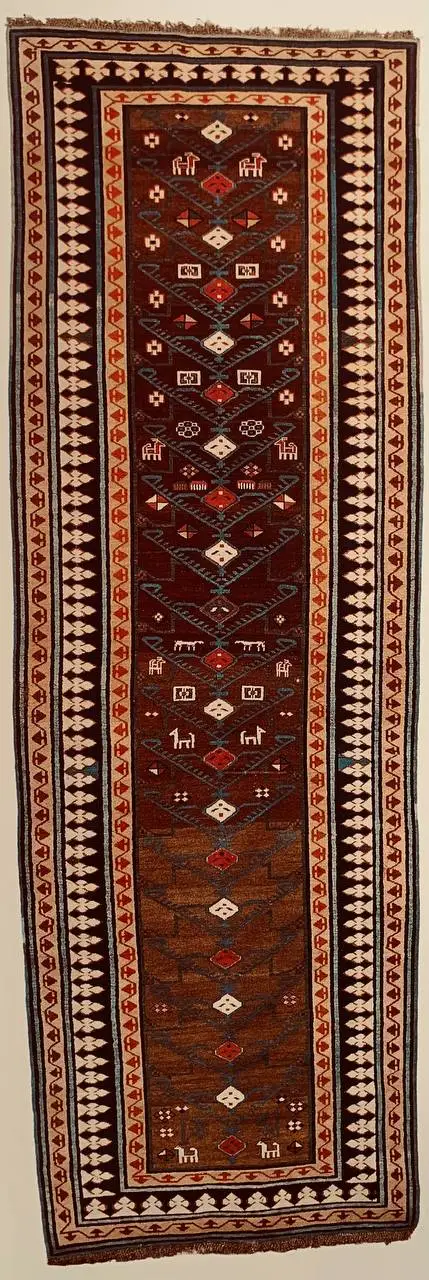
Shadda weaving
The root of Shadda comes from checkered or Shadvard. It’s design consist of one color checkered pattern or decorative.
